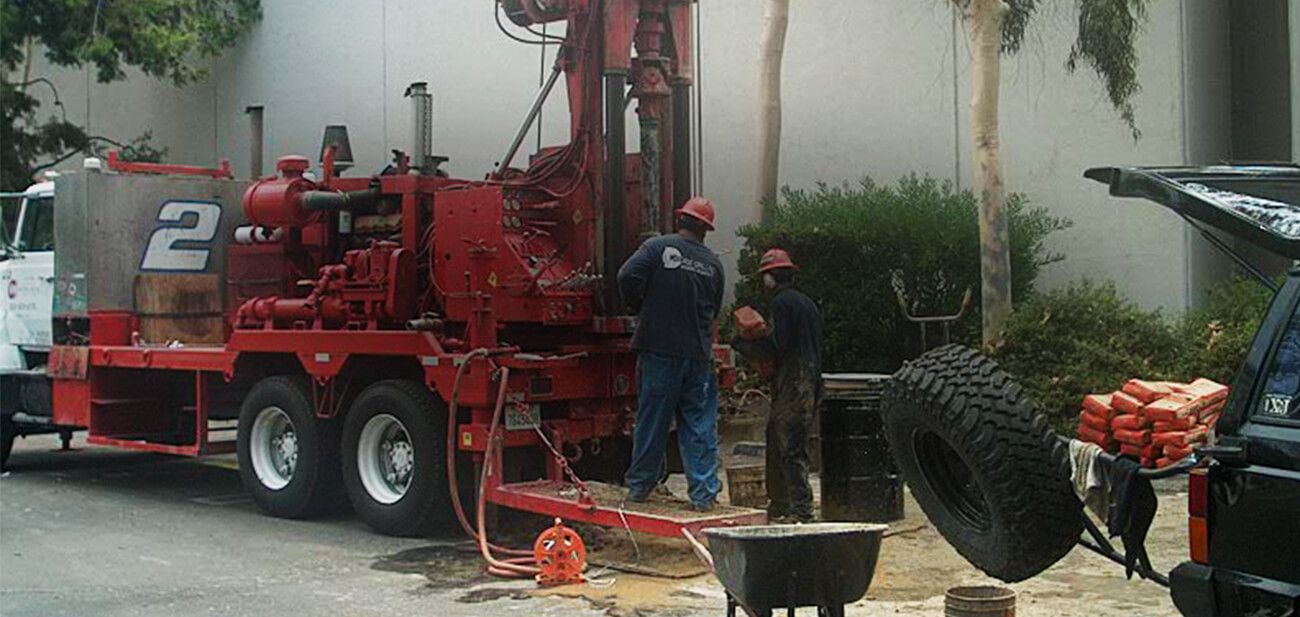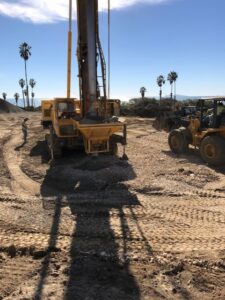
In the dynamic world of construction, where the future landscapes are shaped and built, the foundation of every towering structure, every road, and every bridge begins with the ground beneath. This is where the expertise of companies like G3SoilWorks becomes invaluable. Ensuring proper soil compaction is not just a step in the construction process; it is the cornerstone of safety, longevity, and structural integrity. However, the path to achieving the right soil density is fraught with challenges, from selecting the appropriate testing method to interpreting the results accurately. This guide delves deeper into the nuances of soil density testing, offering clarity on field density test methods, calculations, and equipment, thus empowering project managers, engineers, and construction professionals with the knowledge to make informed decisions for their projects.
Soil density testing is paramount in construction for several reasons. It directly impacts the structural stability, ensuring that the foundation can support the intended loads without undue settlement or failure. Incorrect soil compaction can lead to disastrous consequences, including uneven settlement, structural damage, and severe drainage issues, potentially resulting in catastrophic failure and financial losses. For projects ranging from skyscrapers and bridges to roads and residential landscapes, the significance of conducting thorough field density tests cannot be overstated. It is not just about adhering to regulatory standards but about ensuring the safety and durability of the construction work.
At its core, soil density refers to the mass of soil per unit volume, typically expressed in terms of dry density. The higher the soil density, the stronger and more stable the ground. This fundamental property of soil plays a pivotal role in determining the load-bearing capacity of the earth, affecting everything from the design of foundations to the longevity of the structures built upon them.
The complexity of soil density testing lies in the variety of methods available, each with its specific applications, advantages, and limitations. These methods are broadly categorized into direct and indirect testing methods, offering flexibility and adaptability to different project requirements.
The nuclear density test is a sophisticated method that uses a radioactive source to measure the density and moisture content of the soil. Despite its precision and the speed with which it delivers results, this method requires specialized equipment and trained personnel, making it more suitable for large-scale or high-stakes projects. The field density test equipment involved in nuclear testing is highly regulated, ensuring safety and compliance with health standards.
The sand cone test is a more accessible and widely used method, especially suitable for smaller projects or those with limited budgets. It involves digging a hole in the ground, filling it with sand, and calculating the density of the compacted soil. The simplicity and affordability of the sand cone test make it a popular choice, though it requires careful execution to ensure accuracy.
Primarily used in laboratory settings, the water displacement method is ideal for determining the density of fine-grained soils. This method involves measuring the volume of water displaced by a known volume of soil, providing a direct measurement of soil density. While highly accurate, this method is more time-consuming and less suited to field applications.
The penetration test offers a quick and easy means to estimate soil density by measuring the resistance of the soil to penetration by a rod or cone. This method is particularly useful for preliminary assessments and can guide decisions on more detailed testing.
The plate bearing test is essential for evaluating the load-bearing capacity of the soil, particularly relevant for foundation design and construction. By applying pressure to a plate on the surface and measuring the soil’s deformation, engineers can infer the soil’s density and strength. This method is critical for ensuring the safety and stability of structures.

Selecting the appropriate soil density testing method requires a careful consideration of several factors:
The scope and scale of the project will largely dictate the most suitable testing method. High-rise buildings, for example, may require more sophisticated tests like the nuclear density test for their foundation work, whereas residential projects might rely on the sand cone test.
The characteristics of the soil, including its moisture content, particle size, and potential contamination, play a crucial role in selecting the testing method. Fine-grained soils, for instance, are better suited to water displacement methods in laboratory settings.
While some methods offer rapid results, they may not provide the precision needed for certain projects. Balancing the need for accuracy with budget constraints is a critical consideration.
Ensuring that the chosen method meets local building codes and engineering standards is crucial for project approval and success.
The field density test frequency is a vital factor in construction projects. Testing should not be a one-off task but a regular activity at different stages of construction to ensure ongoing compliance with design specifications and to account for any changes in soil properties over time.
The analysis and interpretation of soil density test results require expertise. Qualified professionals can translate data into actionable insights, recommending adjustments in compaction techniques or design modifications to ensure project success.
Accurate and detailed reporting of test results, including field density test calculations and the equipment used, is essential for future reference, regulatory compliance, and quality assurance purposes. These documents serve as a testament to the diligence and precision applied in ensuring the structural integrity of the construction project.

G3SoilWorks has some of the most experienced geologic engineers in Southern California. Our principals are veterans, with over 100 years in geotechnical, environmental, and engineering geologic consulting experience throughout the southwest and western United States.
The journey to ensuring the right soil density for construction projects is complex, requiring careful consideration of the testing methods, equipment, and the interpretation of results. With the guidance of experienced professionals like those at G3SoilWorks and a comprehensive understanding of field density test methods and their applications, project managers and engineers can lay the groundwork for safe, durable, and successful construction projects. Remember, the foundation of any great structure is not just made of concrete and steel but of the knowledge and diligence applied in understanding and preparing the soil it stands on. Call us at +1 714-668-5600 for more information.
FAQ 1: What Is Soil Density Testing and Why Is It Important?
Answer: Soil density testing measures the compactness of the soil, which is crucial for determining its ability to support structures. It’s a critical step in ensuring the safety, durability, and longevity of construction projects. Proper soil density helps prevent issues like uneven settlement and structural damage, making it essential for any construction project, whether it’s for a high-rise building, a bridge, or residential landscaping.
FAQ 2: What Are the Different Soil Density Testing Methods?
Answer: There are several methods used to test soil density, each with its own applications and advantages:
FAQ 3: How Do I Choose the Right Soil Density Testing Method for My Project?
Answer: Choosing the right testing method depends on several factors:
For expert guidance, consult with professionals like those at G3SoilWorks to make an informed decision based on your specific project needs.
Follow, engage, learn. Stop by our blog to see what’s happening at G3SoilWorks.
G3Soilworks – a full service geotechnical/ engineering geologic consulting firm serving clients since 2009 and delivering expert solutions with our highly experienced team and specialized consultants.
G3SoilWorks
350 Fischer Avenue Costa Mesa, CA 92626
Tel. 714.668.5600
E. info@g3soilworks.com